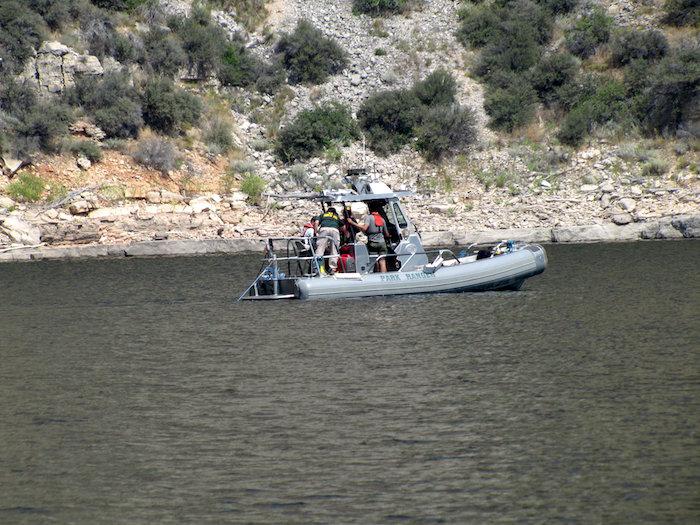
Search efforts continued Thursday to find the final victim of a boat accident at Bighorn Canyon NRA/NPS
A mysterious boating accident has left two dead and another missing and presumed dead at Bighorn Canyon National Recreation Area in northern Wyoming and southern Montana. Search efforts continued Thursday, five days after the single-vessel accident, for the missing man.
Details of the accident on August 11 were scant. While other boaters on Bighorn Lake north of Bighorn Canyon had seen the boat in question earlier in the day, no one saw the actual accident, according to park staff.
Bighorn Canyon rangers and Big Horn County deputies responded last Saturday to a 911 call from an off-duty deputy advising of a boating accident near "Dayboard 7," a floating dock a bit south of Black Canyon in the Montana portion of the NRA, with a sunken vessel and two individuals in the water.
Robert Ludwick, of Billings, Montana, was found on the shoreline the day of the accident and transported to a medical facility for unspecified injuries.
The search resumed Sunday morning and the body of Tammy Scoville, also of Billings, was recovered from the water. The body of the second victim, Nathan Kelley, 36, also of Billings, wasn't found until Wednesday. Efforts resumed Thursday to find the body of another man.
The operation has involved U.S. Coast Guard personnel, a dive team from Salt Lake City, a dog team trained in water recovery, and elaborate side sonar equipment from the National Park Service. A team from the Park Service's Submerged Resources Center that had been at Grand Teton National Park was diverted to the NRA, and they brought with them the side scan sonar equipment,which was towed behind a rescue boat.
The equipment produces sound at high frequencies directed towards the side. According to the park staff, as the boat tows the sonar through the water, the sound pings towards the bottom at an angle. The sound bounces off any hard objects on the bottom and returns to the sonar. The crew was able to get depths of 130 feet and cover a range of out approximately nearly 460 feet per side. The returning sound data are interpreted into a 2D image of the lake bottom, with shadows behind objects that the sound hits.
The overall depth of the lake in the search area has been measured down to 380 feet.



Comments
I believe how the accident happened was the driver lost control of the boat And was launched out of the boat. At that time The boat spun out of control and the front passenger was ejected as well. It then hit the canyon wall and started to sink leaving the other two passengers unable to get out. I have been an avid boater most of my life I've dealt with very high speed watercraft for quite some time now this is the only thing that makes sense to me without actually being there to see it happen... it's so sad because I have known Tami Scoville since 1968, she's been a lifelong friend I will miss her emencely...
Thanks for that insight, Brian, because I couldn't come up with any plausible scenario, where that story would hold water.